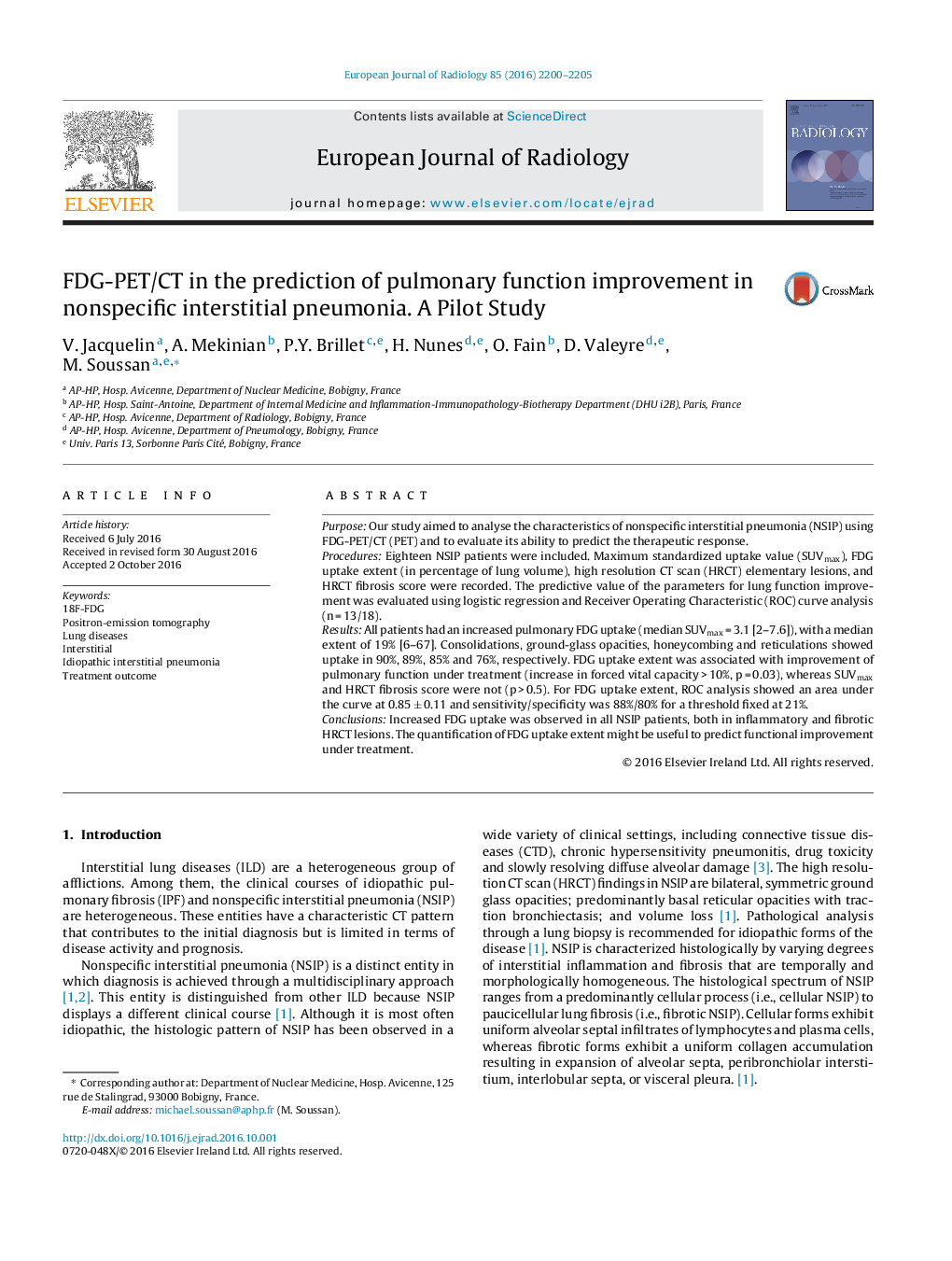| Article ID | Journal | Published Year | Pages | File Type |
|---|---|---|---|---|
| 5726101 | European Journal of Radiology | 2016 | 6 Pages |
PurposeOur study aimed to analyse the characteristics of nonspecific interstitial pneumonia (NSIP) using FDG-PET/CT (PET) and to evaluate its ability to predict the therapeutic response.ProceduresEighteen NSIP patients were included. Maximum standardized uptake value (SUVmax), FDG uptake extent (in percentage of lung volume), high resolution CT scan (HRCT) elementary lesions, and HRCT fibrosis score were recorded. The predictive value of the parameters for lung function improvement was evaluated using logistic regression and Receiver Operating Characteristic (ROC) curve analysis (n = 13/18).ResultsAll patients had an increased pulmonary FDG uptake (median SUVmax = 3.1 [2-7.6]), with a median extent of 19% [6-67]. Consolidations, ground-glass opacities, honeycombing and reticulations showed uptake in 90%, 89%, 85% and 76%, respectively. FDG uptake extent was associated with improvement of pulmonary function under treatment (increase in forced vital capacity > 10%, p = 0.03), whereas SUVmax and HRCT fibrosis score were not (p > 0.5). For FDG uptake extent, ROC analysis showed an area under the curve at 0.85 ± 0.11 and sensitivity/specificity was 88%/80% for a threshold fixed at 21%.ConclusionsIncreased FDG uptake was observed in all NSIP patients, both in inflammatory and fibrotic HRCT lesions. The quantification of FDG uptake extent might be useful to predict functional improvement under treatment.
